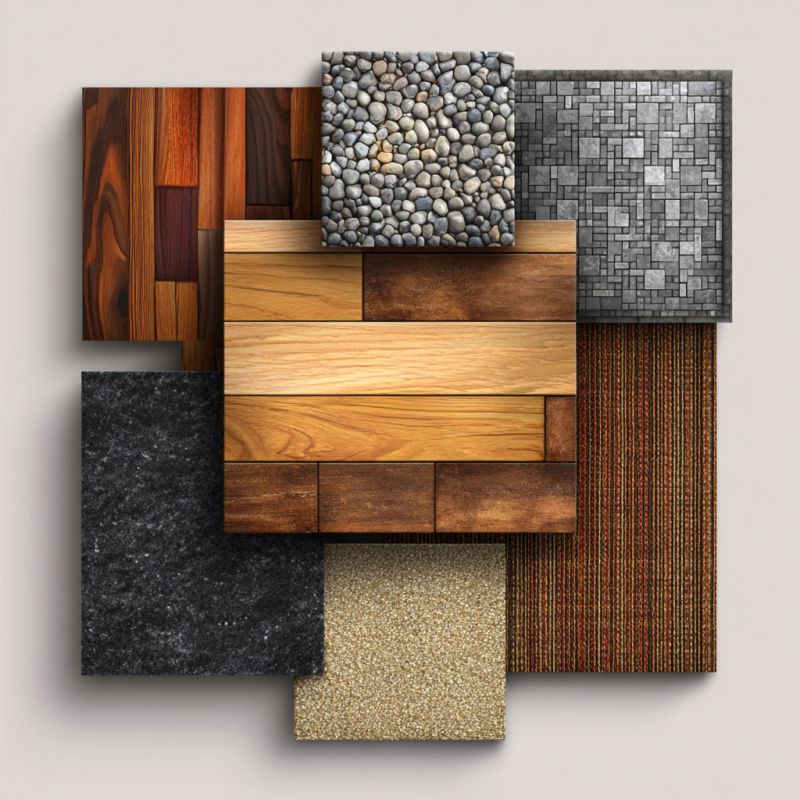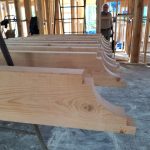
Flooring Installation Cost: What You Need to Know Before Getting Started
Understanding Flooring Installation Cost: Factors and Considerations
When it comes to home improvements, flooring installation is one of the most impactful updates you can make to your living space. Not only does it transform the look and feel of your home, but it can also significantly increase the overall value of your property, making it a wise investment. Whether you’re renovating a single room or planning a whole-house makeover, the flooring installation cost plays a crucial role in determining your project budget.
Understanding flooring installation cost is vital for homeowners who want to plan their budget effectively. Costs can vary depending on the type of flooring you choose, the size of the area to be covered, and the complexity of the installation. Additionally, unexpected costs such as the need for subfloor repairs or removal of old flooring materials can further impact the total cost of your project.
For more details on the flooring options and installation services we offer, check out our flooring sales and installation services.
Types of Flooring Materials and Their Costs
When considering flooring options for your home, it’s essential to understand the flooring installation cost associated with each material. Different materials come with varying price ranges and installation complexities, which can significantly impact the overall flooring installation cost. Below is a detailed breakdown of popular flooring materials, their costs, and the pros and cons of each:
Hardwood Flooring
Cost: Typically one of the most expensive flooring options, with prices ranging from $6 to $12 per square foot for materials alone. The flooring installation cost can add another $3 to $5 per square foot, depending on the complexity of the job and the type of wood used.
Benefits:
- Timeless beauty: Hardwood floors offer an elegant, classic appearance that adds warmth and charm to any room, making them a popular choice despite the higher flooring installation cost.
- Durability: Known for its longevity, hardwood can last for decades if well-maintained, providing long-term value that justifies the initial flooring installation cost.
- Increased home value: Hardwood floors can significantly increase your home’s resale value, making it a worthwhile investment for homeowners willing to pay a higher flooring installation cost.
Drawbacks:
- Cost: Hardwood can be one of the priciest options, both in terms of material and flooring installation cost.
- Maintenance: Requires periodic refinishing to maintain its aesthetic appeal, especially in high-traffic areas.
- Moisture sensitivity: Hardwood is not ideal for high-moisture environments like bathrooms or basements, which could increase the flooring installation cost if you need additional moisture protection.
Tile Flooring
Cost: Tile can range from $1 to $15 per square foot, depending on the material (ceramic, porcelain, or stone) and style. Flooring installation cost typically ranges from $4 to $8 per square foot, depending on layout complexity.
Benefits:
- Water-resistant: Tile is perfect for high-moisture areas such as bathrooms and kitchens.
- Durability: It can withstand heavy foot traffic and is scratch-resistant.
- Variety of styles: Available in a wide range of colors, patterns, and sizes, tile allows for customization, ensuring that the flooring installation cost reflects your design preferences.
Drawbacks:
- Installation complexity: Laying tile requires precise cutting, grouting, and setting, which can increase flooring installation cost compared to simpler flooring options.
- Cold to the touch: Tile can feel cold and hard underfoot, which may not be comfortable for some homeowners, especially considering the flooring installation cost involved.
- Grout maintenance: Grout can stain or discolor over time, requiring regular cleaning and resealing, which adds additional costs to the ongoing flooring installation cost.
Vinyl Flooring
Cost: Vinyl is one of the most affordable flooring options, typically ranging from $2 to $5 per square foot for materials, with flooring installation cost generally falling between $2 to $4 per square foot.
Benefits:
- Affordable: Vinyl is one of the least expensive options, making it ideal for budget-conscious homeowners looking to keep flooring installation cost low.
- Water-resistant: It’s a popular choice for kitchens and bathrooms due to its moisture resistance, without drastically increasing the flooring installation cost.
- Easy installation: Vinyl can be installed over most subfloors and doesn’t require adhesives or grout, significantly reducing flooring installation cost.
Drawbacks:
- Durability: While water-resistant, vinyl can get scratched or torn more easily than other materials.
- Limited aesthetic appeal: Although modern vinyl designs can mimic wood or stone, it may not provide the same premium look as natural materials, even though it’s a more affordable flooring installation cost.
- Chemical sensitivity: Some lower-quality vinyl floors can off-gas, so it’s important to choose higher-quality options, which might increase the flooring installation cost slightly.
Carpet Flooring
Cost: Carpet typically ranges from $2 to $8 per square foot for materials, with flooring installation cost ranging from $1 to $2 per square foot. Luxury carpet options can cost more, depending on material and quality.
Benefits:
- Comfort: Carpet offers softness underfoot, making it ideal for living rooms, bedrooms, and family spaces, often adding to the flooring installation cost due to its aesthetic appeal.
- Insulation: Carpet adds insulation, helping to retain heat in colder months and providing noise reduction, which can be a significant benefit when considering flooring installation cost for colder climates.
- Variety: Available in various colors, textures, and patterns, making it easy to match any interior design style without drastically raising flooring installation cost.
Drawbacks:
- Maintenance: Carpet requires regular cleaning, including vacuuming, and may need professional cleaning periodically. It can also stain more easily than other materials.
- Durability: Carpet tends to wear out faster than hardwood or tile, especially in high-traffic areas, which can increase the flooring installation cost over time due to the need for more frequent replacements.
- Allergens: Carpet can trap dust, dirt, and allergens, which can impact indoor air quality if not cleaned regularly, affecting the long-term value of the flooring installation cost.
Benefits of Professional Flooring Installation
While DIY projects can be tempting to save on costs, professional installation can ensure the flooring installation cost is well-spent. Here are some of the key benefits of working with an expert:
- Proper tools and techniques: Professionals have the necessary tools and skills to do the job efficiently, preventing costly mistakes that could arise from improper installation.
- Quality workmanship: Flooring professionals ensure that your floors are level, well-secured, and finished to a high standard, reducing the risk of future issues that could incur additional costs.
- Time savings: Professionals can complete the job much faster than DIY efforts, which means less disruption to your daily life.
- Warranties: Many professional installers offer warranties on their work, giving you peace of mind and protecting you from any issues that may arise after installation.
For more about our professional flooring installation services, visit our Flooring Sales and Installation.
How to Maintain Your New Floors to Extend Their Lifespan
Offering maintenance tips can add value to your readers by showing how to protect their investment in flooring. Proper care ensures that floors last longer and remain looking great. Here are some maintenance tips for popular flooring materials:
Hardwood
- Regularly polish your hardwood floors to maintain their shine.
- Avoid moisture buildup and clean spills immediately to prevent warping or staining.
- Use area rugs in high-traffic areas to reduce wear and tear.
Tile
- Seal grout lines regularly to prevent stains and moisture buildup.
- Clean spills immediately to prevent them from setting into the grout.
- Sweep or vacuum frequently to remove dirt and debris that can scratch tile surfaces.
Vinyl
- Avoid using harsh cleaning chemicals that can damage the surface.
- Use a damp cloth or mop to clean the floors and keep them looking fresh.
- Place felt pads under furniture to avoid scratches.
Common Mistakes to Avoid During Flooring Installation
This section can highlight common errors that increase the flooring installation cost. By avoiding these mistakes, you can save time and money:
- Not properly preparing the subfloor: An uneven or damaged subfloor can increase the installation time and material costs.
- Skipping moisture testing: In areas like basements or bathrooms, neglecting moisture testing can lead to mold, mildew, or warped floors.
- Incorrect measurements: If the area is not measured accurately, it can lead to unnecessary material waste or gaps between floorboards, which could increase the overall flooring installation cost.
Flooring Installation Timeline
The time required to install flooring varies based on the material and the complexity of the installation. Here’s a general breakdown of how long each type of flooring typically takes to install:
- Hardwood: Typically takes 3 to 7 days, depending on room size and material choice.
- Tile: Usually takes 2 to 5 days, depending on the layout and how long the grout needs to set.
- Carpet: Often the quickest to install, taking about 1 to 2 days, depending on the area size and complexity of the job.
Hidden Costs of Flooring Installation
While most quotes provide a basic breakdown, there are often hidden costs that can affect the flooring installation cost. Here are some potential additional fees to consider:
- Furniture removal: Many contractors charge extra to move heavy furniture or remove existing fixtures before the installation.
- Subfloor repairs: If the subfloor is damaged, it may need to be replaced or repaired before the new flooring can be installed.
- Underlayment or soundproofing materials: High-quality underlayment for noise reduction or additional comfort can add to the overall cost.
- Disposal fees: Don’t forget to ask about the cost of removing and disposing of your old flooring material.
For more on hidden costs, explore our Home Additions Services.
How to Choose the Right Flooring for Your Home
Choosing the right flooring involves more than just considering the flooring installation cost. Here are some factors to help guide your decision:
- High-traffic areas: For entryways and kitchens, durable materials like tile or vinyl are ideal.
- Bedrooms and living rooms: Comfort and aesthetic appeal are important here, so carpet or hardwood can be great choices.
- Budget: Consider balancing flooring installation cost with functionality and long-term value. If you’re on a tight budget, vinyl or laminate can give you a stylish look without the high cost.
Financing Your Flooring Project
For those interested in financing their flooring installation, there are several options to consider:
- Home improvement loans: These loans can provide a lump sum to cover the flooring installation cost and are typically offered at lower interest rates.
- Promotional financing: Some contractors offer promotional financing or payment plans for flooring projects, allowing you to spread out payments over time.
- Credit options: Using a credit card with a low interest rate or introductory 0% APR offer might be an option if you plan to pay the amount off quickly.
Key Factors That Affect Flooring Installation Cost
The flooring installation cost can vary widely depending on several factors. Some of the most significant include:
Type of Flooring Material
The material you choose for your flooring plays a substantial role in determining the overall flooring installation cost. Hardwood, luxury vinyl, tile, and carpet all come with different price tags. For example, hardwood floors tend to be more expensive due to the material and labor costs involved, while carpet or vinyl may be more affordable options. The flooring installation cost for hardwood is typically higher because of both the material and specialized installation requirements. On the other hand, vinyl or carpet may be easier and less costly to install, which helps keep the flooring installation cost lower.
Size of the Area
Naturally, the larger the area you need to cover, the higher the flooring installation cost. The total square footage is one of the most straightforward ways to calculate flooring installation cost. If you are installing flooring in multiple rooms or throughout your entire home, this will drive up the flooring installation cost accordingly. It’s important to accurately measure the area to avoid underestimating the overall flooring installation cost.
Labor Costs
Labor is often a significant portion of your flooring installation cost. Some flooring materials, like hardwood, require more intricate installation, which can increase labor costs. The complexity of the installation process, such as whether the floors need to be leveled or require special tools, can raise the flooring installation cost. Professional installers will charge different rates based on their experience, the complexity of the installation, and regional price variations, all of which can affect your total flooring installation cost.
Additional Preparations or Subflooring
In some cases, your existing subfloor may need repairs or replacement before the new flooring can be installed. This adds to the overall flooring installation cost, as subflooring repairs or replacements can require additional materials and labor. When calculating the flooring installation cost, be sure to account for any necessary repairs to the subfloor to avoid surprises later on in the process.
Removal and Disposal of Old Flooring
If you’re replacing existing flooring, there may be extra charges for the removal and disposal of old materials. The flooring installation cost may increase if your installer needs to remove and dispose of old flooring, especially if it involves more complicated removal tasks such as pulling up tile or hardwood. Make sure to ask your installer if this service is included in the initial estimate or if it will be an additional fee added to the flooring installation cost.
How to Get an Accurate Estimate for Flooring Installation Cost
To get a precise flooring installation cost, it’s essential to request quotes from multiple contractors. Each quote should include detailed information about the materials, labor, and any additional charges that contribute to the flooring installation cost. By gathering quotes from different contractors, you can compare the flooring installation cost and ensure you are getting a fair price for the work required. Be sure to examine each estimate closely and verify that all aspects of the project, including labor and materials, are included in the flooring installation cost.
Ready to Transform Your Home?
At Mazzamuto Construction, we believe great spaces start with thoughtful planning and skilled craftsmanship. Whether you’re exploring ideas or ready to build, our team is here to guide you every step of the way. Let’s bring your vision home—reach out for a personalized consultation today!
Frequently Asked Questions
1. How much tile installation cost?
Tile installation costs can vary based on the material and room size. Generally, you can expect tile installation costs to range from $1 to $10 per square foot, depending on the complexity and type of tile chosen.
2. How much new flooring cost?
The cost of new flooring depends on the material. For example, hardwood floors can cost anywhere from $5 to $12 per square foot, while vinyl or carpet might range from $2 to $5 per square foot.
3. How to get flooring estimate?
To get an accurate flooring estimate, contact a professional installer for a consultation. They will assess your space, recommend the best flooring options, and provide an estimate based on the size of the area and the materials you choose. For a more detailed estimate, visit our flooring sales and installation page.
4. Can I install flooring myself?
While DIY flooring installation is possible, it’s recommended to hire a professional to ensure proper installation and avoid costly mistakes.
5. What’s the most affordable flooring option?
Vinyl flooring and carpet are typically the most affordable options. These materials provide great value while still offering durability and style.
Key Takeaways
- Flooring installation costs depend on several factors like material, room size, labor, and additional services.
- Materials like hardwood and tile can be more expensive than vinyl or carpet.
- Get multiple estimates from contractors to ensure you’re getting a fair price.
- Prepare for potential additional costs like subfloor repairs or the removal of old flooring.




